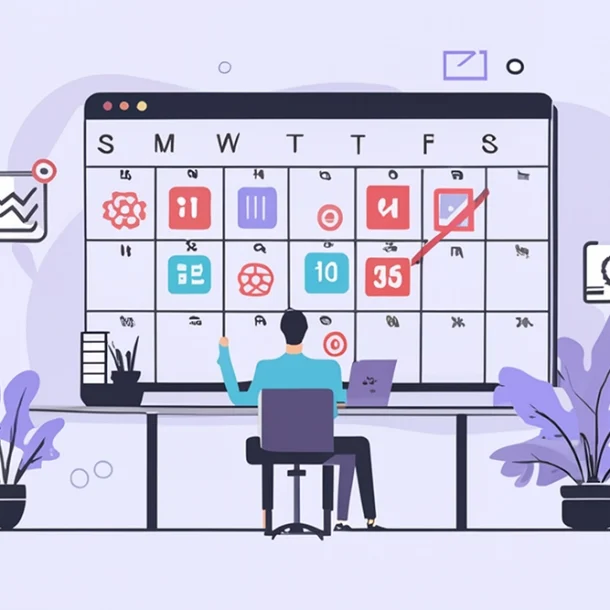
The Benefits of Retargeting: How to Convert Lost Visitors
In the bustling world of digital marketing, it’s easy for potential customers to get lost in the crowd. You’ve done the hard work of attracting visitors to your site, but they leave without making a purchase. Don’t despair, retargeting is here to help you reclaim those lost opportunities. In this blog post, we will explore the benefits of retargeting and how it can help you convert those lost visitors.
Understanding Retargeting
Before we delve into the benefits of retargeting, it’s important to understand what retargeting actually is.
What is Retargeting?
Retargeting is a digital marketing strategy aimed at targeting users who have previously visited your website but did not make a purchase or complete a desired action.
This is done by placing a small piece of code, often referred to as a pixel, on your website. When a user visits your site, the pixel drops an anonymous browser cookie. Later, when your cooked visitors browse the web, the cookie informs your retargeting provider to show ads, effectively reminding them of your website and products.
Different Types of Retargeting
Retargeting can be categorized into two types:
- Pixel-based retargeting: This is the most common type of retargeting that works by placing a pixel on your website that leaves a cookie in the visitor’s browser. The cookie then informs a retargeting platform to serve specific ads based on the pages they visited on your website.
- List-based retargeting: This type of retargeting works by targeting a list of contacts that you already have. It works in platforms like Facebook where you can upload a list of email addresses and serve retargeting ads to those users when they log into their Facebook account.
Retargeting vs Remarketing
While these terms are often used interchangeably, there’s a subtle difference. Retargeting is typically about online ad placements and display ads targeted at users who have visited your website, while remarketing usually involves email campaigns that are sent to customers in your email database.
Retargeting allows you to reach a wider audience and keep your brand in front of bounced traffic after they leave your website. Now that we have a clear understanding of what retargeting is, let’s explore its benefits.

The Benefits of Retargeting
Retargeting offers a multitude of benefits. Let’s consider why it’s an indispensable tool in any marketer’s arsenal.
High Conversion Rates
One of the most significant benefits of retargeting is the potential for high conversion rates. Retargeting focuses on users who have already shown interest in your products or services, which increases the likelihood of conversion. According to a study by Criteo, retargeting can boost app re-engagement rates by up to 63% and conversion rates by up to 150%.
In addition, retargeting ads are typically highly relevant to the user because they’re based on past browsing behavior, which further increases engagement and conversion rates.
Increased Brand Recall
Retargeting not only nudges users towards conversion but also significantly boosts brand awareness. A user may visit your site once, but continuous exposure to your brand via retargeting ads reinforces your brand’s image and keeps you at the top of the user’s mind.
According to ComScore, retargeted ads can lead to a 1046% increase in branded search and a 726% lift in site visitation after four weeks of ad exposure.
Cost-effective
Retargeting can also be a cost-effective strategy.
Since you’re targeting users who have already shown interest in your product or service, you’re likely to see a higher return on ad spend (ROAS).
A study by Wordstream found that website visitors who are retargeted with display ads are more likely to convert by 70%.
Retargeting also allows for better budget allocation as you can adjust your spending based on a user’s behavior and likelihood of conversion.

Implementing Retargeting
Now that we’ve covered the benefits of retargeting, let’s discuss how you can implement retargeting in your marketing strategy.
Step-by-step Guide to Setting Up a Retargeting Campaign
Implementing a retargeting campaign involves several key steps:
- Selecting Your Retargeting Platform: There are many platforms available for retargeting, including Google Ads, Facebook, and Twitter. Choose the one that best aligns with your audience and business goals.
- Installing Pixel and Creating Retargeting Lists: Once you’ve chosen a platform, the next step is to install the retargeting pixel on your website. This pixel will track visitor behavior and allow the platform to serve retargeting ads. After installing the pixel, create retargeting lists based on user behavior. For example, you might create lists for users who visited a specific product page, added an item to their cart, or visited your pricing page.
- Crafting Your Retargeting Ad: Design and write your retargeting ads. These should be highly relevant and include a clear call to action. Don’t forget to test different versions of your ad to see what works best!
Best Practices for Retargeting Campaigns
Here are some best practices to help make your retargeting campaigns more effective:
- Segment Your Audience: Different visitors have different behaviors and interests, so it’s essential to segment your audience and tailor your ads to each group. For example, someone who has abandoned their shopping cart might need a different nudge compared to someone who left after reading a blog post.
- Frequency Caps: Ensure you set a limit on how often your ads are shown to prevent ad fatigue. Too much exposure can lead to a negative brand experience.
- Burn Pixels: Use burn pixels for customers who have made a purchase to stop serving them ads. This helps avoid irritating your customers with irrelevant ads.
- Compelling CTAs: Your ads should have a clear and compelling call to action (CTA) that persuades users to click on the ad.
Common Pitfalls to Avoid
While retargeting can be incredibly effective, watch out for these common pitfalls:
- Ad Fatigue: Repeatedly showing the same ad can lead to ad fatigue, where users become so used to seeing your ads they stop paying attention. Keep your ads fresh and rotate them regularly to maintain interest.
- Overexposure: Bombarding users with too many ads in a short time can be intrusive and lead to negative brand perception. Use frequency caps to control how often your ads are shown.
- Ignoring Mobile Users: With the increasing popularity of mobile browsing, make sure your retargeting strategy includes mobile-friendly ads.
Mastering retargeting can take time and patience, but the benefits are well worth the effort. Let’s now look at some advanced retargeting strategies.

Advanced Retargeting Strategies
Retargeting can go beyond the basic approach of serving ads to bounced visitors. Here are some advanced strategies to take your retargeting to the next level:
Segmentation in Retargeting
Segmentation allows you to target specific groups within your audience based on their behavior on your website. For example, you can target users who visited a specific product page with ads for that product. Or, you can target users who abandoned their shopping carts with ads reminding them to complete their purchases. This level of customization makes your retargeting efforts more effective and personalized.
Cross-platform Retargeting
Don’t limit your retargeting to a single platform. Users often switch between devices, so your retargeting strategy should be cross-platform. If a user visits your site on their desktop, you can retarget them with ads on their mobile device. This consistent cross-device presence can increase your conversion rates.
Sequential Retargeting
Sequential retargeting involves showing different ads to users based on their previous interactions with your ads.
For example, if a user clicks on your retargeting ad but doesn’t make a purchase, you can show them a different ad with a stronger call-to-action or a special offer. This strategy keeps your ads fresh and engages users in a “conversation” with your brand.

Case Study: Successful Retargeting Campaigns
To illustrate the potential of retargeting, let’s look at a success story.
Case Study: Bebe
Women’s clothing retailer Bebe used retargeting to drive both online and in-store sales. They used a multi-channel approach, retargeting users on both desktop and mobile platforms.
Their campaign was a success, with a 6% increase in total revenue, a 300% increase in ad engagement, and a significant increase in in-store sales.
This case study shows how retargeting can drive sales and increase engagement. However, it’s important to note that success with retargeting requires a well-planned strategy tailored to your audience’s behavior.
Conclusion
Retargeting is a powerful tool in digital marketing that can help businesses convert lost visitors into customers.
By understanding the benefits of retargeting and how to implement it effectively, businesses can improve their conversion rates, increase brand recall, and achieve a cost-effective marketing strategy. As with any marketing strategy, it’s important to keep testing and optimizing your retargeting campaigns to achieve the best results.
FAQ
To wrap up, let’s address some frequently asked questions about retargeting:
- Does retargeting work for all types of businesses?
Yes, retargeting can be effective for all types of businesses that have an online presence.
It is especially effective for eCommerce businesses due to the direct correlation with online sales, but can also be beneficial for B2B businesses in increasing lead generation.
- How soon should I start seeing results from retargeting?
The timeline can vary depending on various factors like your audience size, ad budget, and the duration of your sales cycle. However, typically, you should start seeing an uptick in impressions and clicks within a few days of launching your campaign.
- How much does retargeting cost?
The cost of retargeting can vary widely based on factors like your industry, the platforms you’re using for retargeting, and the size of your audience. However, retargeting is generally considered to be a cost-effective marketing strategy due to its high ROI.
By incorporating retargeting into your digital marketing strategy, you can maximize your reach and convert lost visitors into loyal customers. Happy retargeting!








